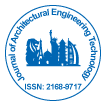3D Printing in Construction: Revolutionizing the Future of Building
Received Date: Mar 01, 2025 / Accepted Date: Mar 31, 2025 / Published Date: Mar 31, 2025
Abstract
The advent of 3D printing technology, also known as additive manufacturing, has initiated a paradigm shift across multiple industries, with the construction sector standing at the forefront of this transformative wave. This paper explores the revolutionary implications of 3D printing in construction, evaluating its potential to redefine traditional building processes, material usage, architectural design, and project delivery timelines. Unlike conventional construction methods that rely heavily on manual labor, prefabrication, and extensive supply chains, 3D printing enables the automated layering of construction materials such as concrete, polymers, or composites directly from digital models. This technological innovation offers significant benefits, including reduced material waste, lower labor costs, increased speed and precision, and the ability to create complex, customized structures that would be otherwise difficult or impossible to achieve using traditional techniques. Furthermore, the discussion includes the environmental impact of 3D printing, examining its capacity to promote sustainability through the use of eco-friendly materials, recycling of construction waste, and reductions in carbon emissions. Challenges such as regulatory hurdles, limited standardization, scalability issues, and the need for interdisciplinary expertise are also critically assessed. The paper concludes by outlining the future prospects of 3D printing in construction, emphasizing its role in enabling more resilient, sustainable, and accessible built environments. As the technology matures, 3D printing holds the promise to not only disrupt the current construction ecosystem but also to democratize access to housing and infrastructure globally
Citation: Jane M (2025) 3D Printing in Construction: Revolutionizing the Future ofBuilding. J Archit Eng Tech 14: 433.
Copyright: © 2025 Jane M. This is an open-access article distributed under theterms of the Creative Commons Attribution License, which permits unrestricteduse, distribution, and reproduction in any medium, provided the original author andsource are credited.
Select your language of interest to view the total content in your interested language
Share This Article
Recommended Journals
Open Access Journals
Article Usage
- Total views: 373
- [From(publication date): 0-0 - Dec 09, 2025]
- Breakdown by view type
- HTML page views: 295
- PDF downloads: 78
